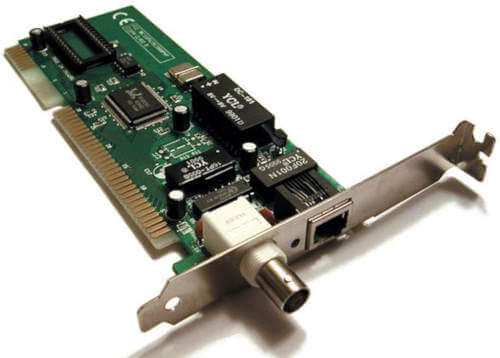A Transceiver is an electronic device for connecting a computer to a baseband transmission network so that the computer can transmit and receive signals on the network. In the 1980s, transceivers were often separate devices attached to thicknet cabling using vampire taps, but today most network interface cards (NICs) have onboard transceivers.

The term “transceiver” is derived from the words “transmitter” and “receiver,” highlighting its dual functionality. Transceivers are commonly used in networking devices, such as network interface cards (NICs), switches, routers, and wireless access points, to facilitate the exchange of data between network devices.
Key Features and Functions of Transceivers:
- Data Transmission: The transmitter component of a transceiver is responsible for converting data signals into a format suitable for transmission over the network medium. It prepares the data for transmission by encoding it, modulating it into the appropriate signal type (e.g., electrical, optical, or radio waves), and sending it across the network.
- Data Reception: The receiver component of a transceiver is responsible for detecting and interpreting incoming data signals. It receives the signals from the network medium, demodulates and decodes them, and converts them into a usable format for the receiving device.
- Signal Conversion: Transceivers often handle the conversion of signals between different media types. For example, a transceiver may convert electrical signals to optical signals (or vice versa) in fiber optic networks. This conversion allows data to be transmitted efficiently over different types of network infrastructures.
- Media Compatibility: Transceivers are designed to be compatible with specific network media types, such as copper cables, fiber optic cables, or wireless signals. They incorporate the necessary hardware and protocols to interact with the specific network medium, ensuring seamless communication between devices.
- Connectivity Options: Transceivers come in various form factors and interfaces to accommodate different network connection types. Common interfaces include Small Form-factor Pluggable (SFP), Gigabit Interface Converter (GBIC), and Quad Small Form-factor Pluggable (QSFP), among others. These interfaces enable the transceiver to be easily installed or replaced in networking devices.
- Speed and Bandwidth Support: Transceivers are designed to support specific data transfer rates and network bandwidths, such as 10/100/1000 Mbps or multi-gigabit speeds. They ensure that data can be transmitted and received at the desired rate, meeting the performance requirements of the network.
- Modular and Hot-swappable: Many transceivers are designed to be modular and hot-swappable, allowing them to be easily inserted or removed from networking devices without disrupting the network operation. This feature provides flexibility and scalability in network infrastructure design and maintenance.
Media Independent Interface (MII)
Some Fast Ethernet NICs have a media independent interface (MII) to which an external transceiver can be connected to provide different kinds of 100-Mbps networking. This allows you greater flexibility in your networking options. For example, 100BaseTX transceivers have an RJ-45 port for connecting unshielded twisted-pair (UTP) cabling, and 100BaseFX transceivers have an SC-type port for connecting fiber-optic cabling.